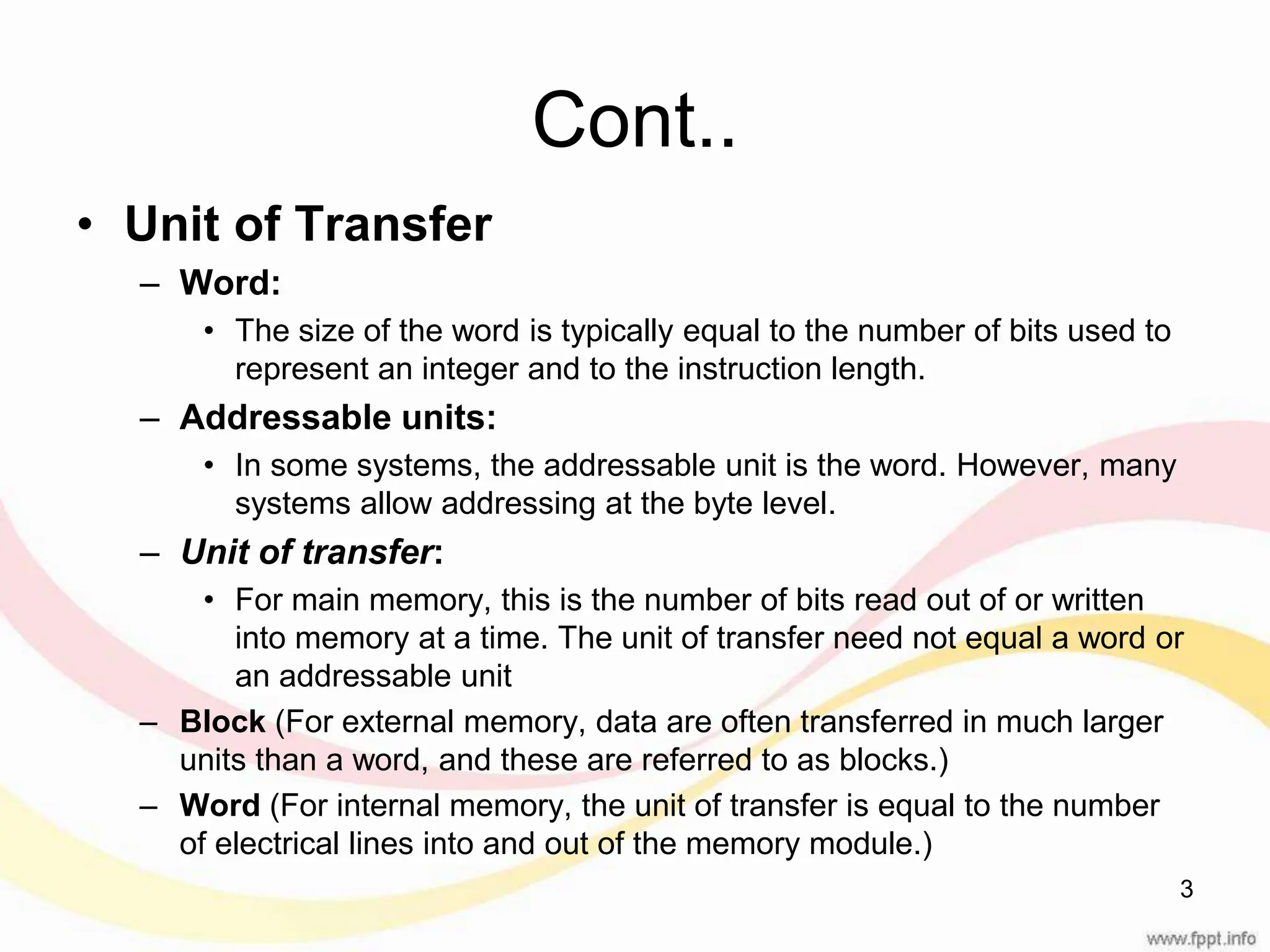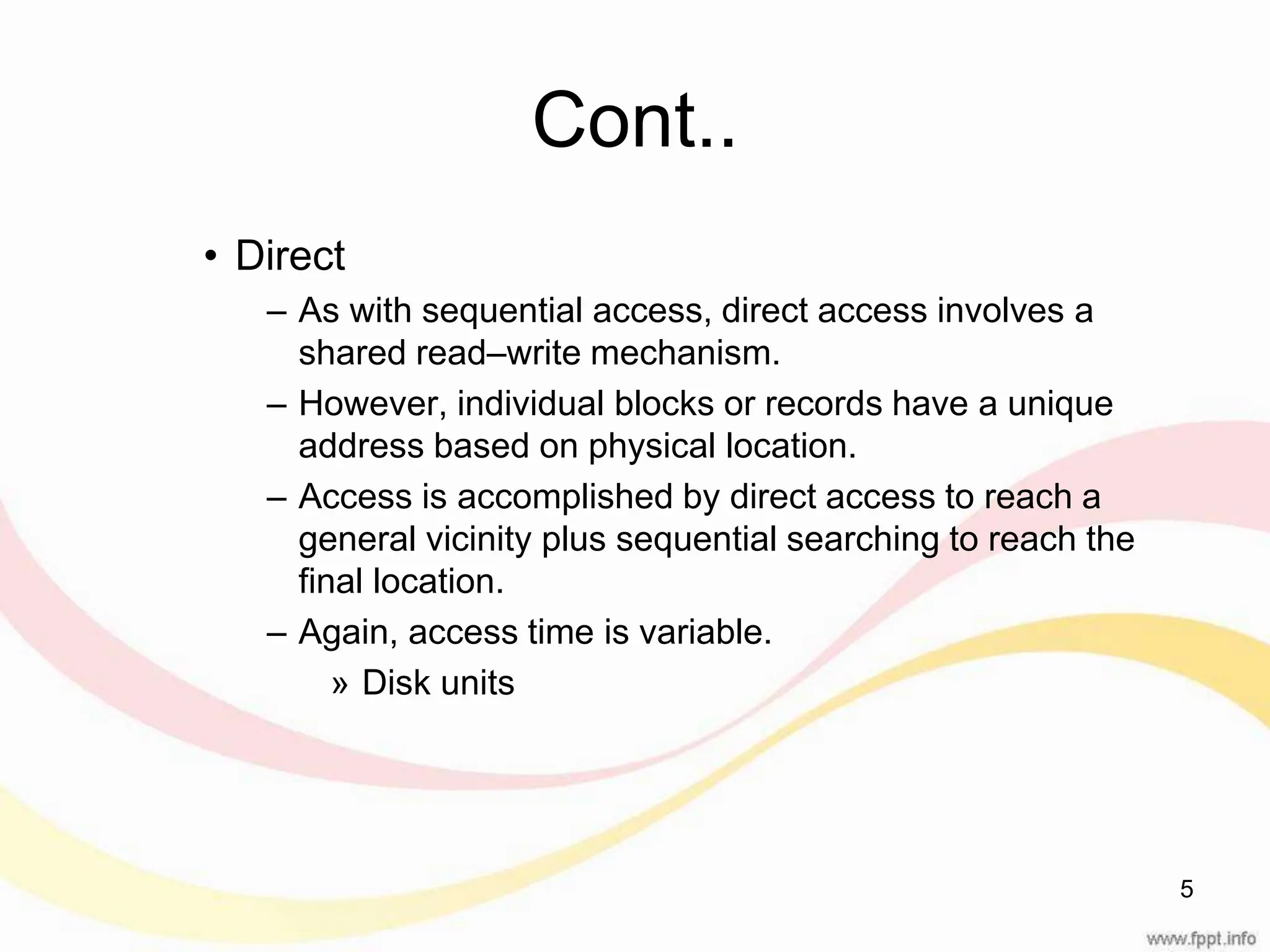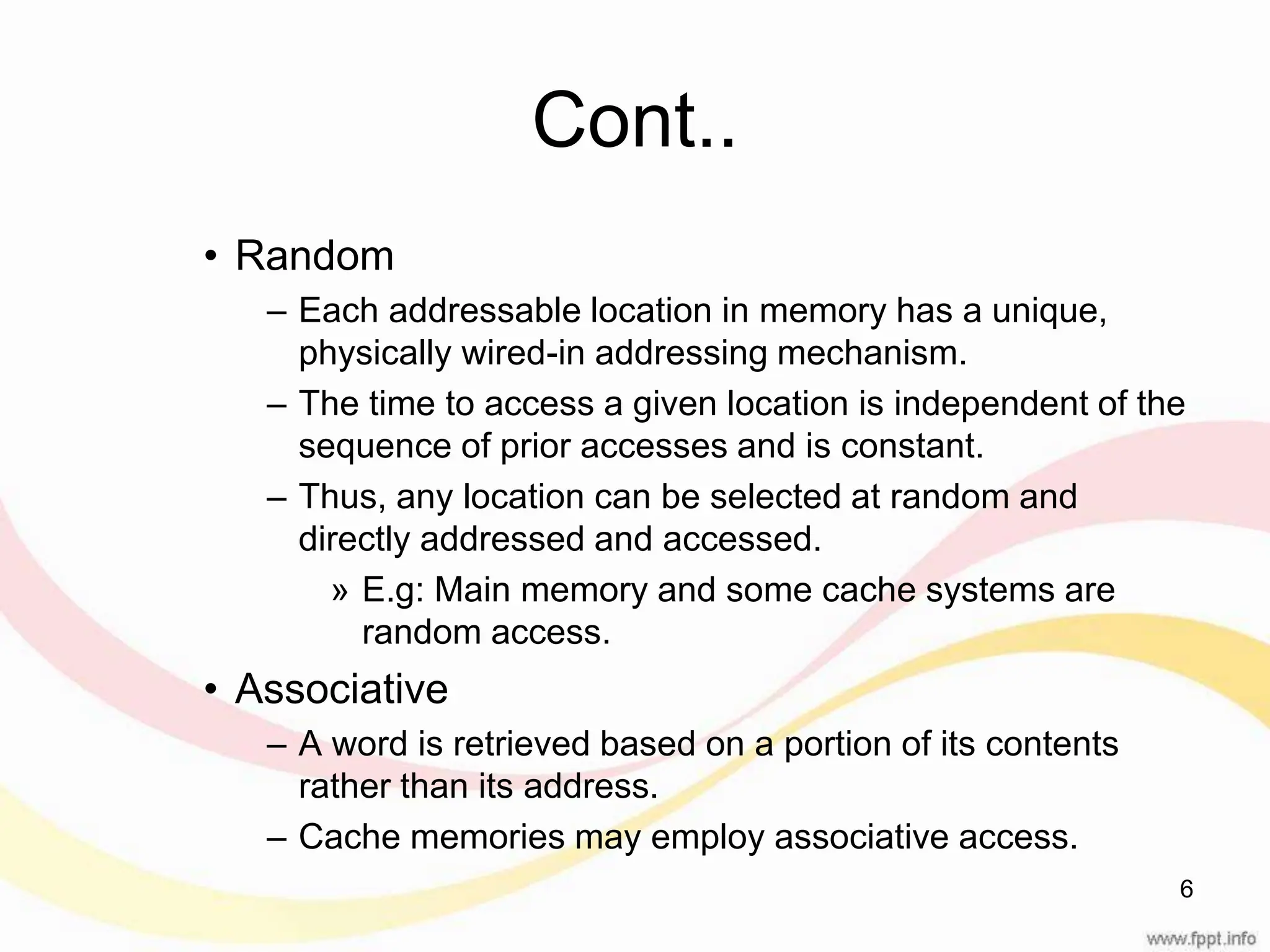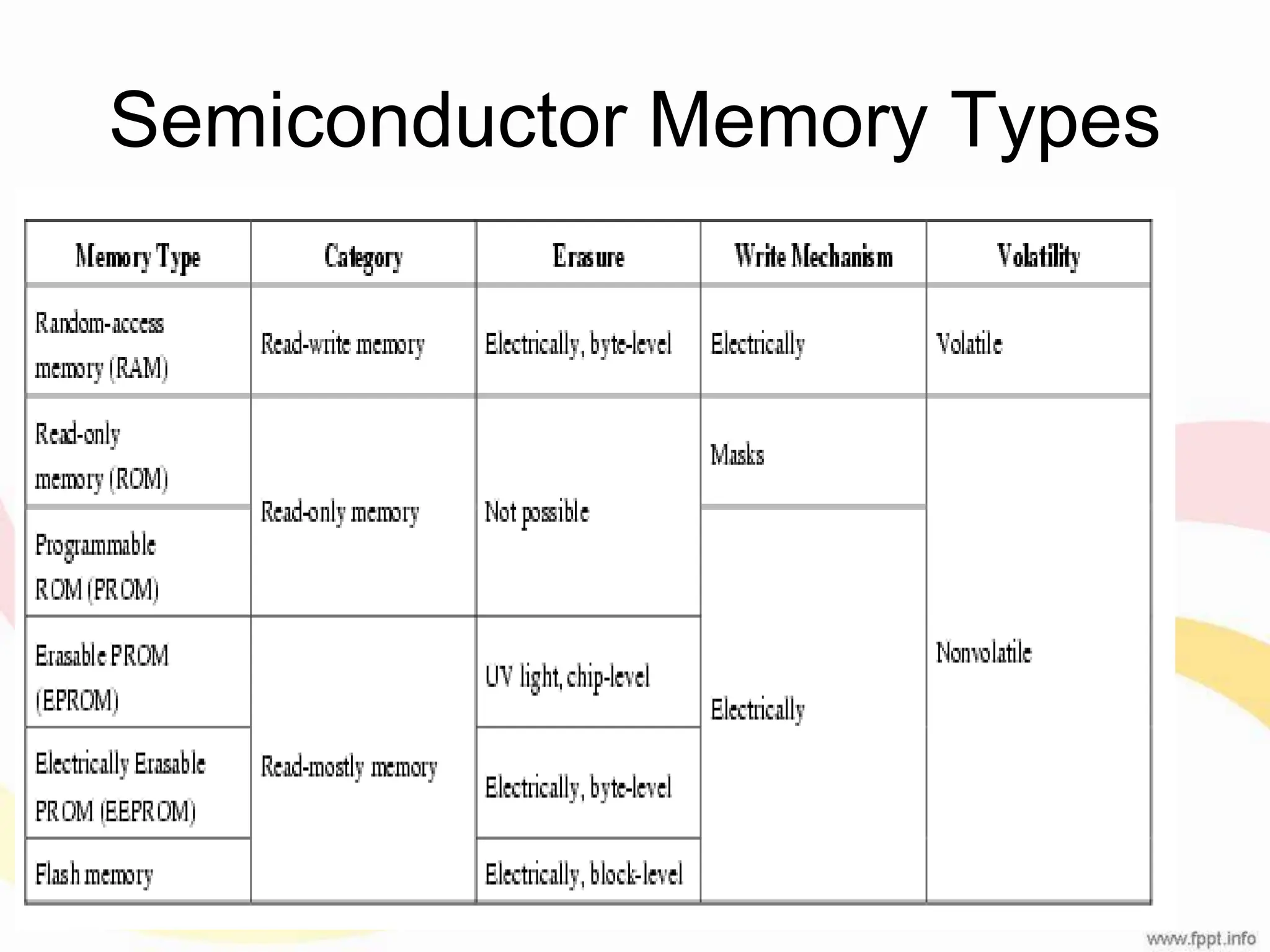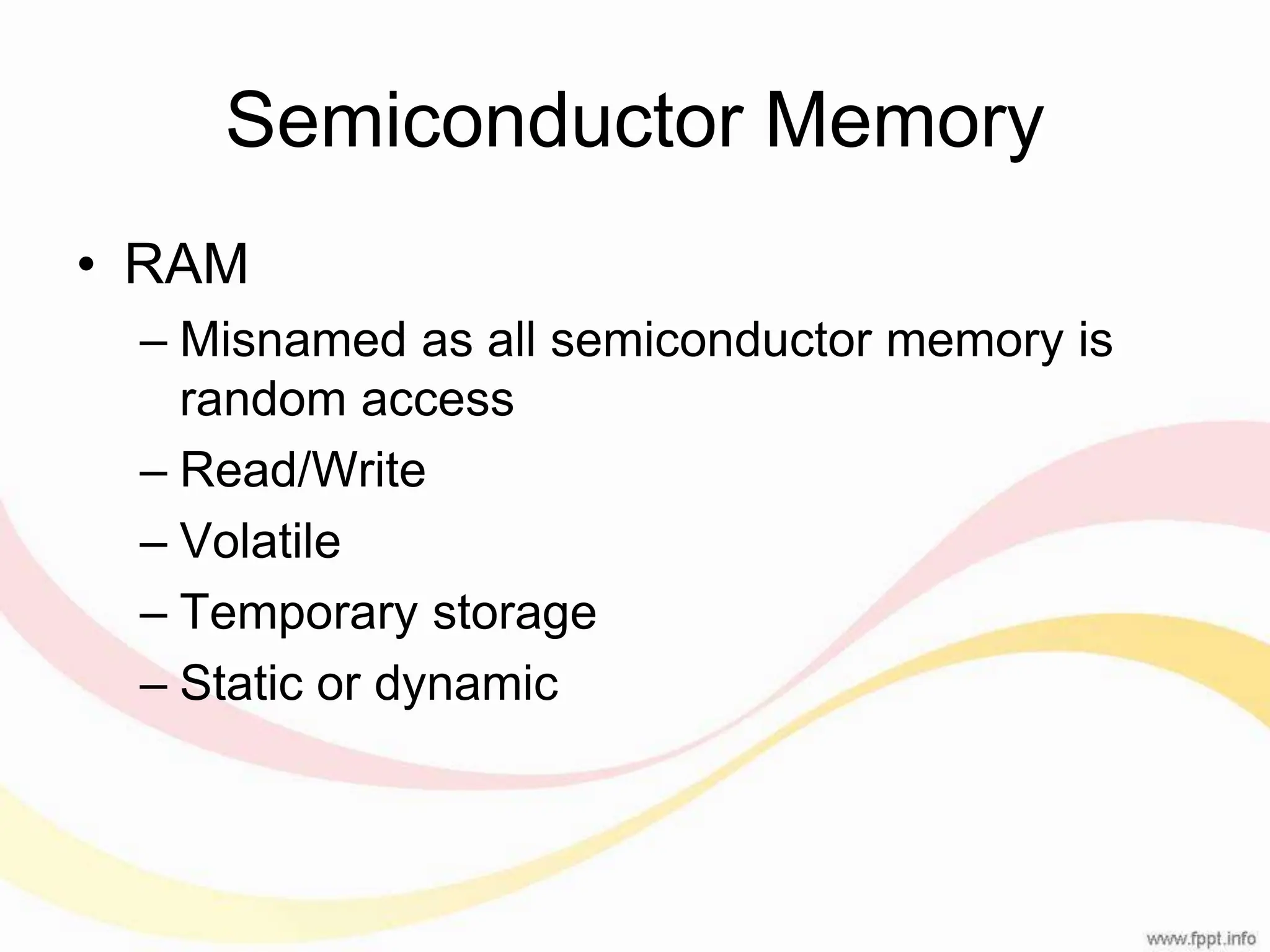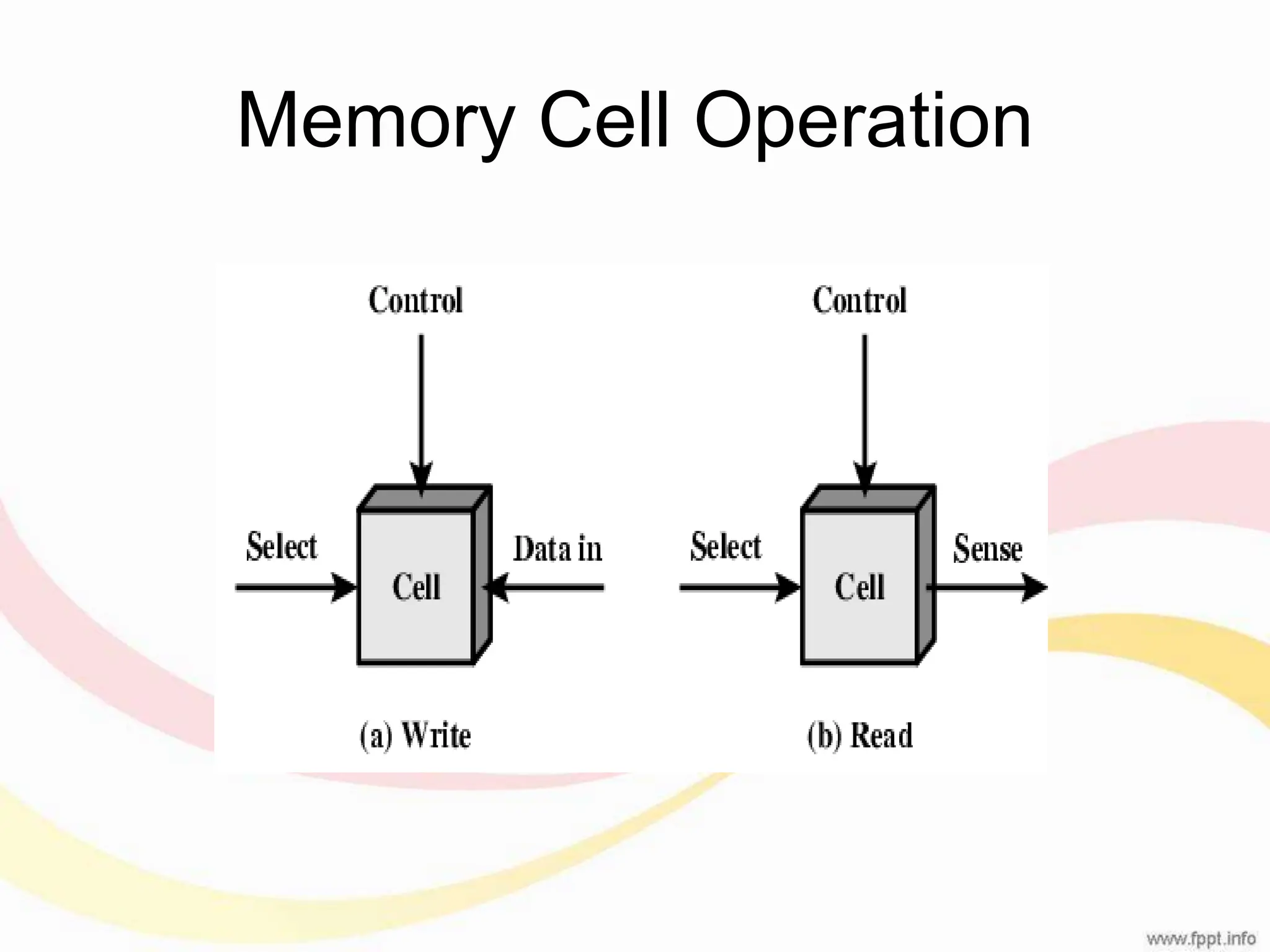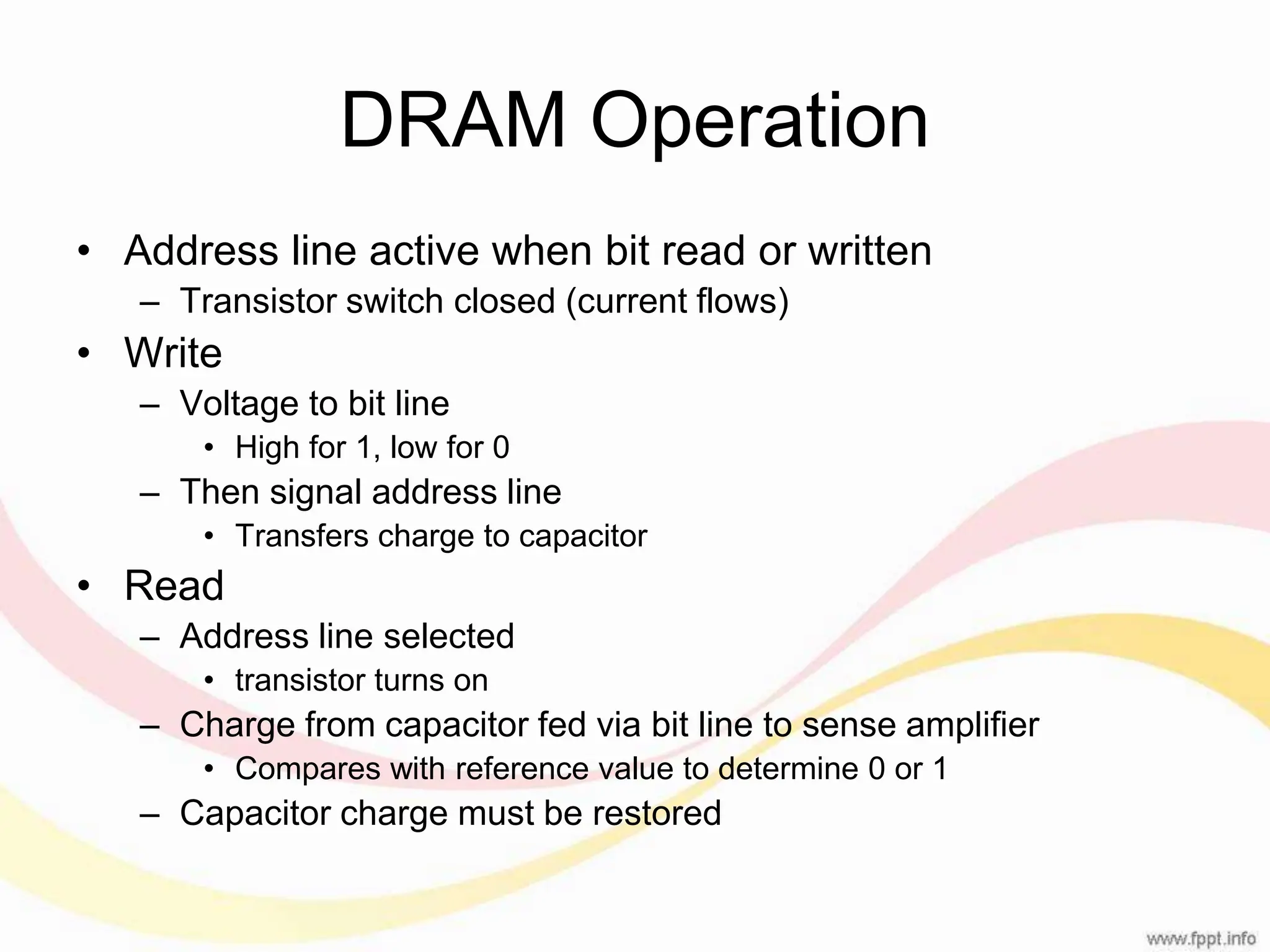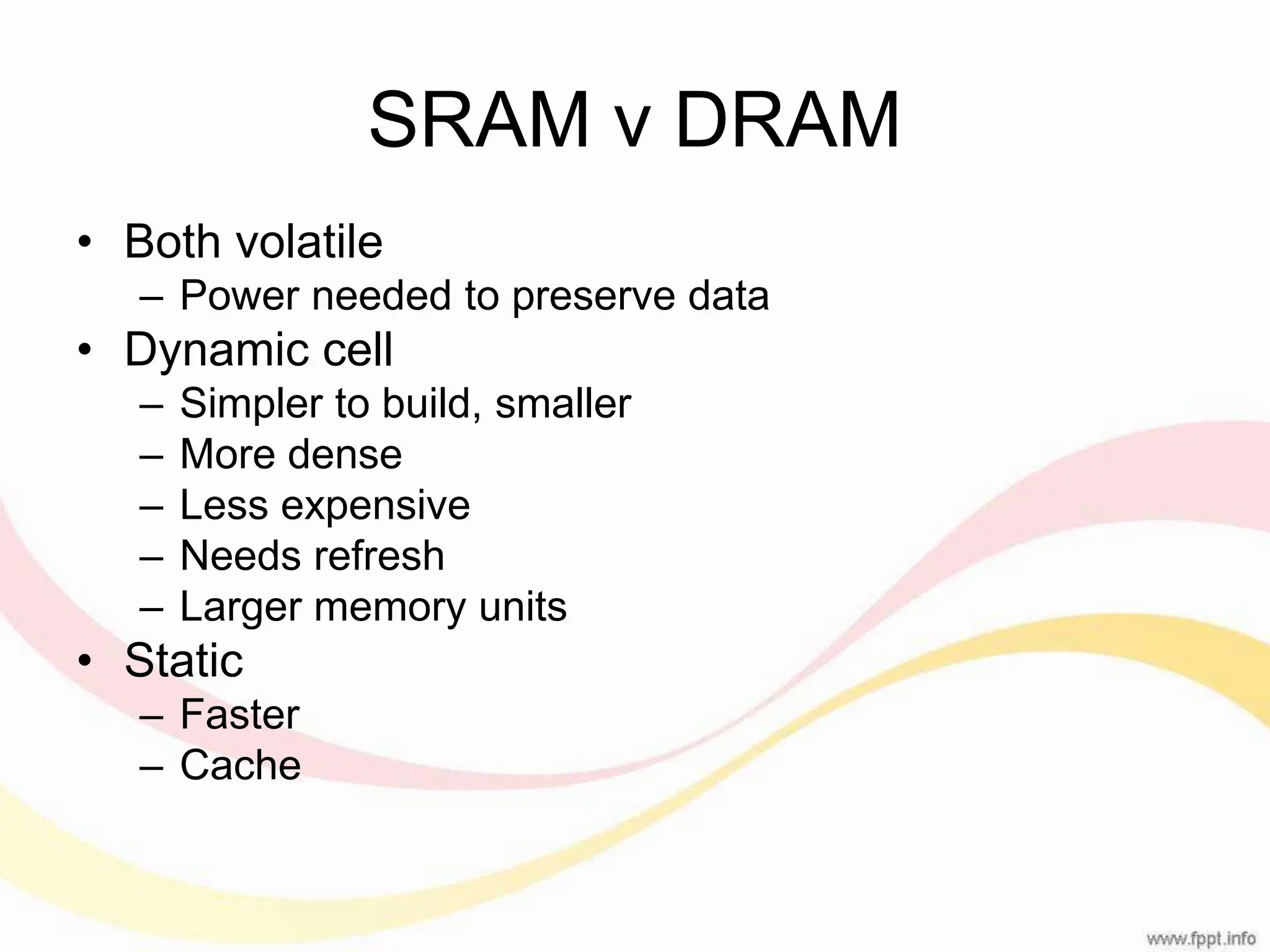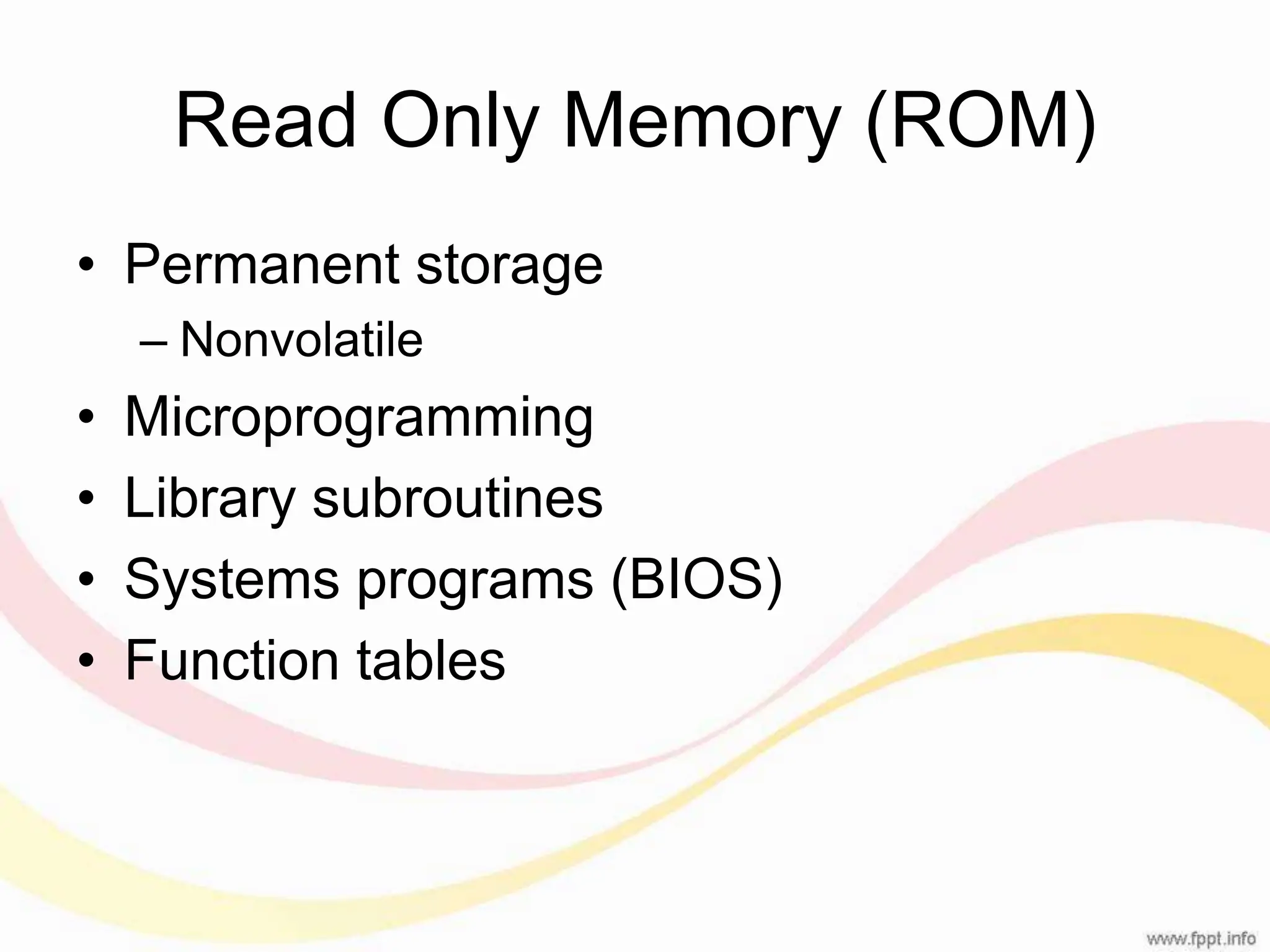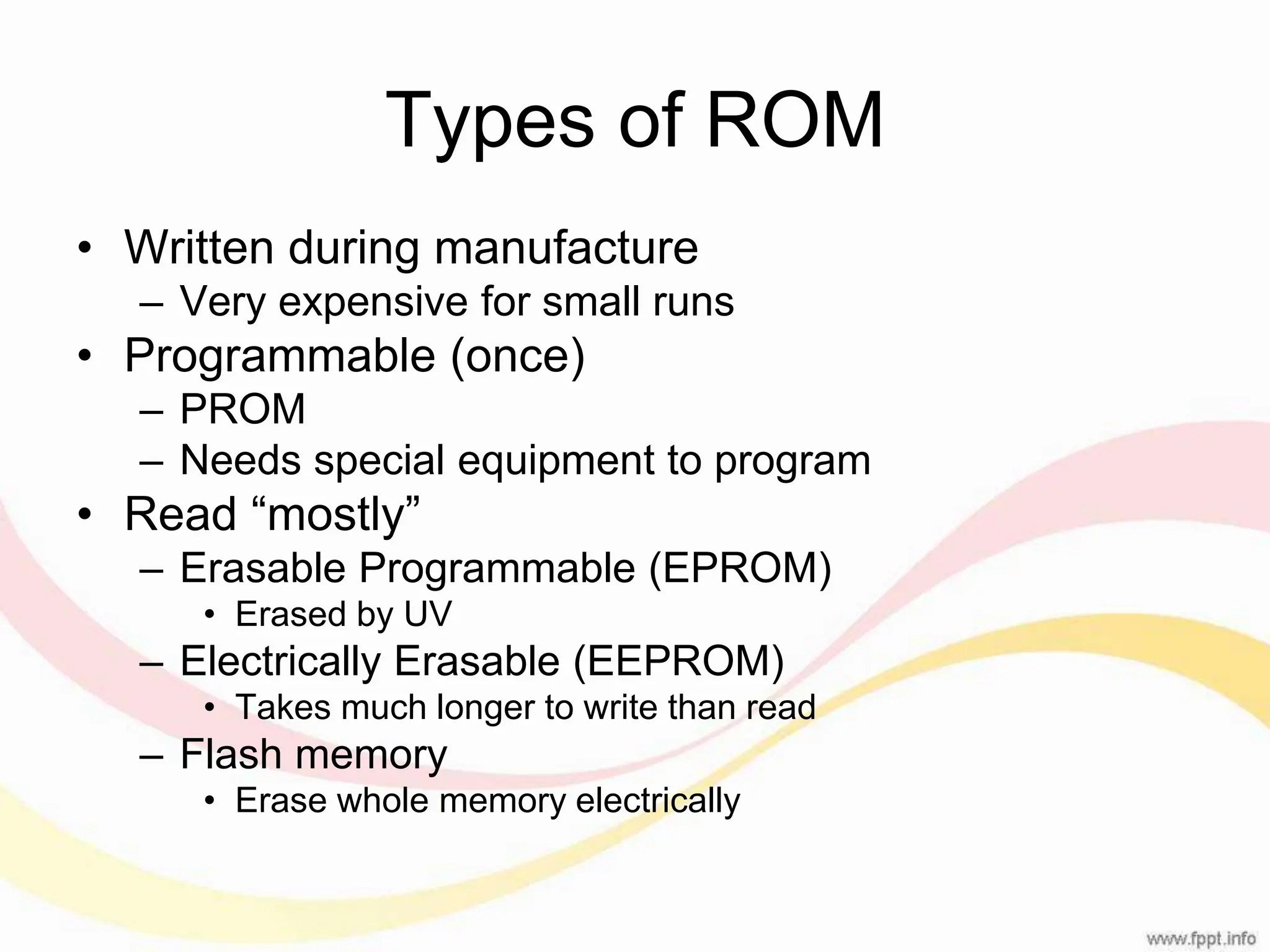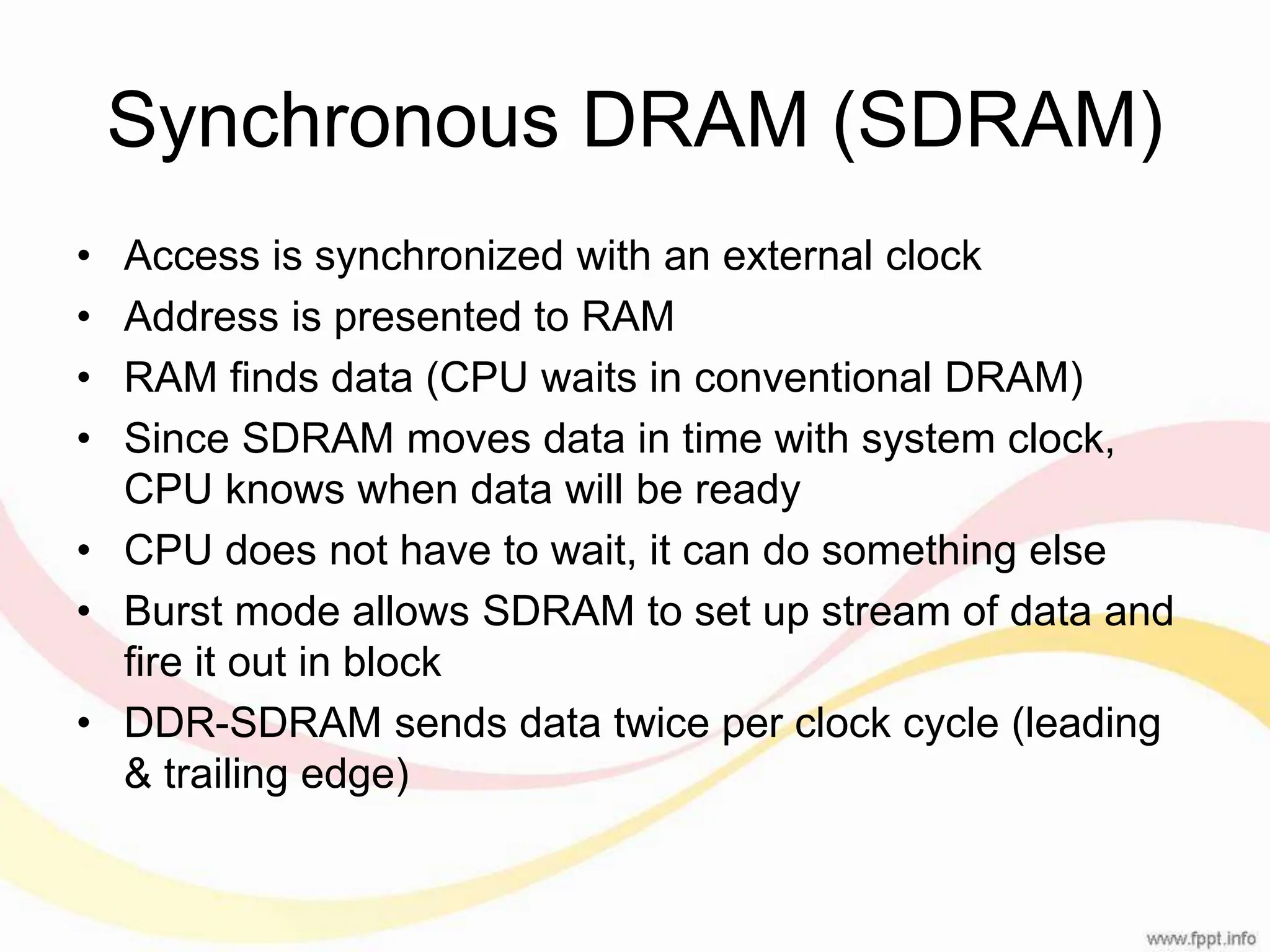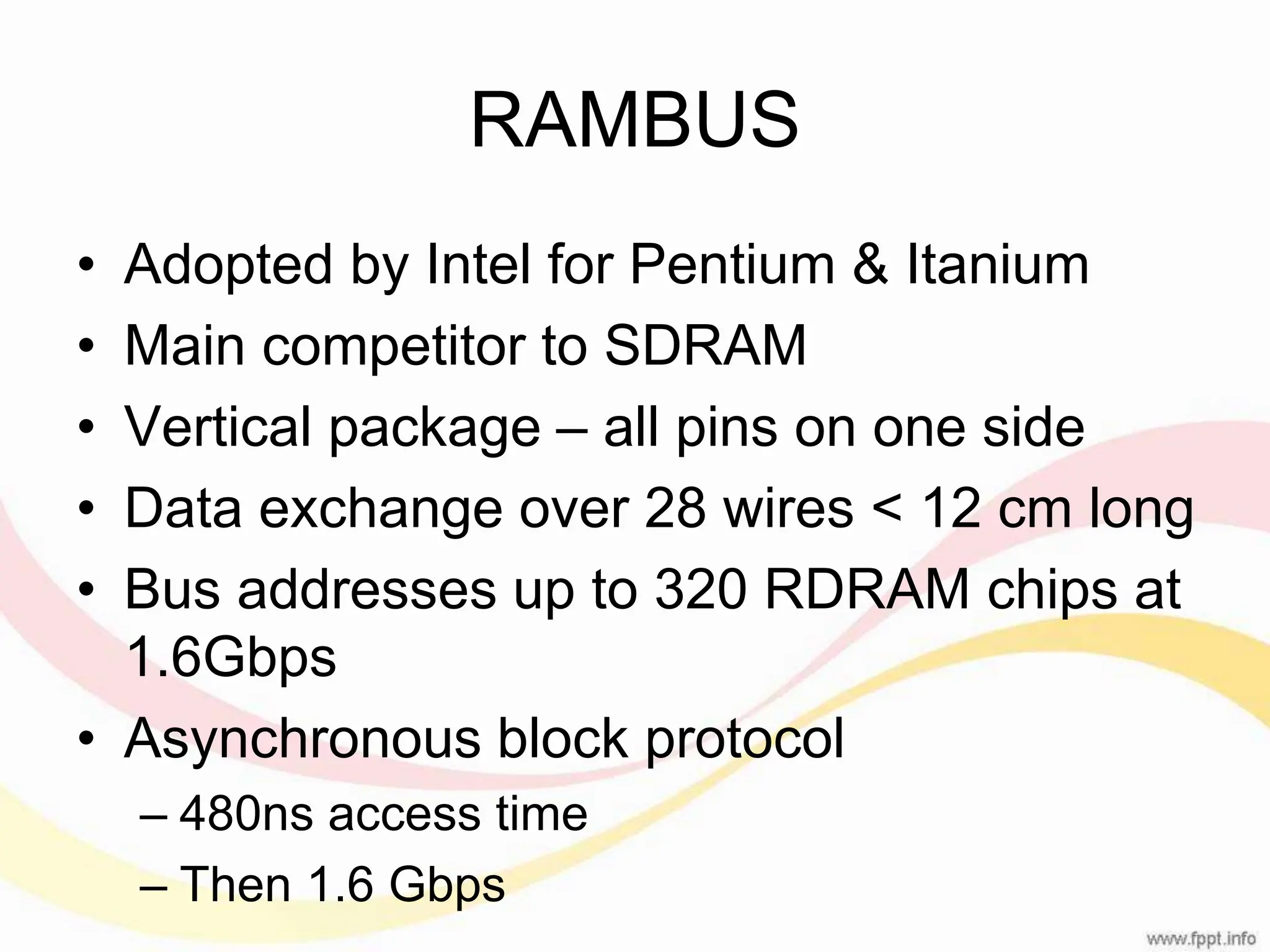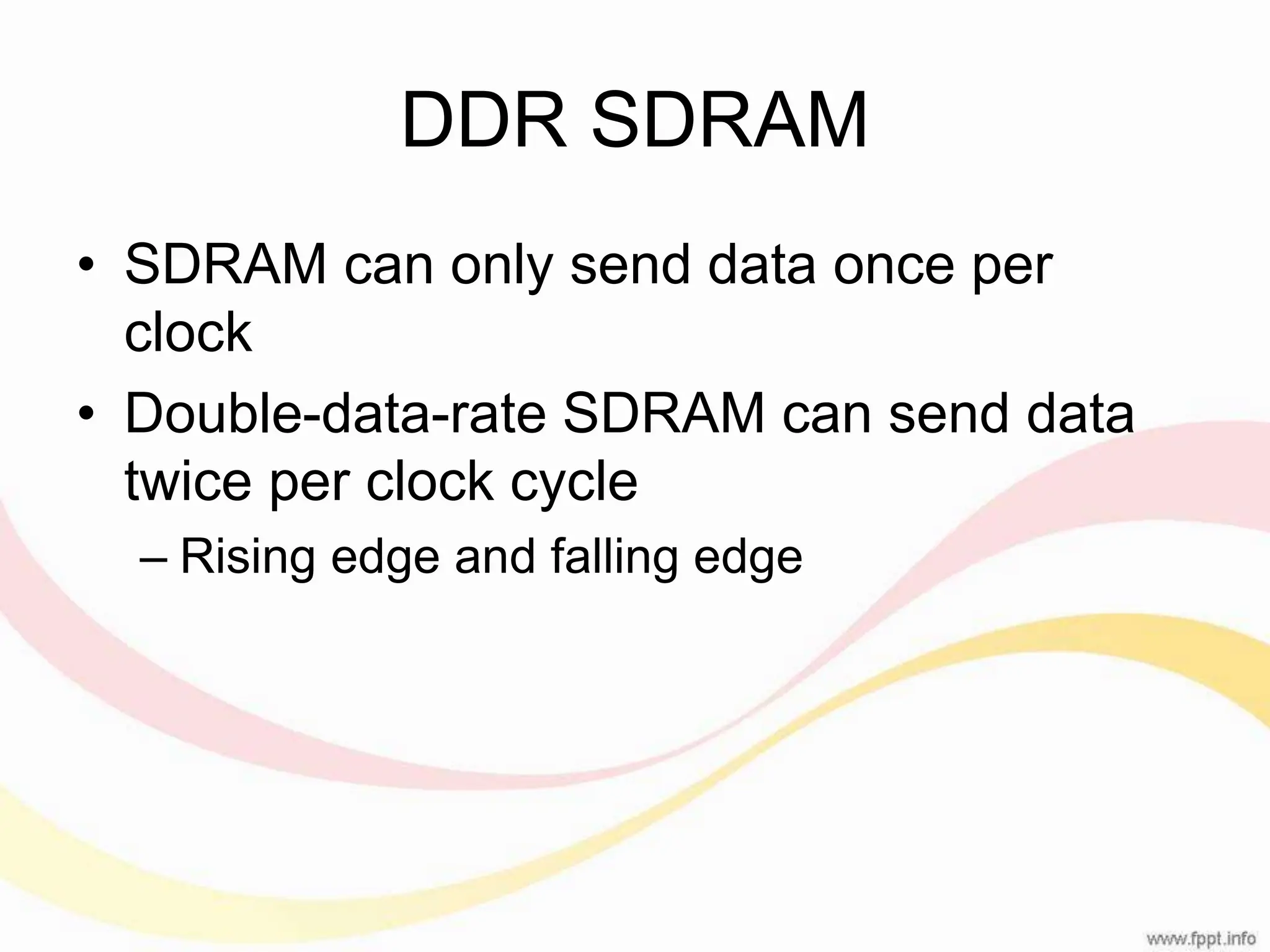The document discusses various aspects of computer memory systems including: - Memory can be internal (e.g. main memory, cache) or external (e.g. disks, tapes). Internal memory is faster but has lower capacity, while external memory is slower but can store more data. - Memory is characterized by its access method (e.g. random, sequential), capacity, units of transfer (e.g. words, blocks), and performance parameters like access time and transfer rate. - Common semiconductor memory types include RAM (random access, volatile), ROM (read-only, non-volatile), and flash memory. RAM can be static or dynamic.


